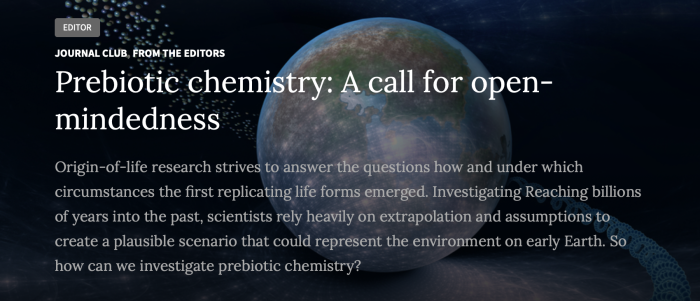Most fascinating talks at the Erskine Williamson Day at the Centre for Science at Extreme Conditions! It was great to discuss how my computational chemistry toolkit can be used for Astrochemistry and Astrobiology at Extremes, and obviously, look at the Origins of Life.
News
Invited talk at Royal Holloway
A very brief visit to Royal Holloway today, invited by Lyell Geosciences Society to talk about my work on Molecular modelling of minerals and materials: from Origins of life to modern challenges.

Nature Communications Early Earth Collections
Our work on prebiotic peptide formation under early Earth conditions is featured in Nature Communications’ “Early Earth Collection”.
Seminar at The Centre for Resources and Earth Energy Systems
 Today I was invited to present my work at The Centre for Resources and Earth Energy Systems, CeREES, as part of their seminar series. I discussed the versatility molecular modelling offers: whether the emergence of protobiomolecules, delamination of layered materials or enhanced oil recovery, all these processes are driven by the molecular interactions at the interface.
Today I was invited to present my work at The Centre for Resources and Earth Energy Systems, CeREES, as part of their seminar series. I discussed the versatility molecular modelling offers: whether the emergence of protobiomolecules, delamination of layered materials or enhanced oil recovery, all these processes are driven by the molecular interactions at the interface.
CeREES is the only research centre in the UK that works across all geoenergy and resource themes, carrying out high-level multidisciplinary research in Petroleum, Unconventional Hydrocarbons, Geothermal, Clean Coal, Resources from Waste, Carbon Capture and Storage, Water and Mineral Resources.
Visit to Nantes
This week I have been invited to Subatech, IMT Atlantique by Prof Andrey Kalinichev.
It was a great opportunity to meet the group, discuss science and work together on some challenging clay systems!
Really enjoyed this trip!

BRSG Founder’s Prize
I am humbled to receive this year’s Institute of Physics BRSG Founder’s Prize for the presentation of my methodology, coupling MD and ssNMR, to rationalise dynamics in solids.
The prize is in memory of the late Professor E R Andrew, founder of British Radiofrequency Spectroscopy Group. Prof Andrew was a pioneer of magic angle spinning and other methods in magnetic resonance.
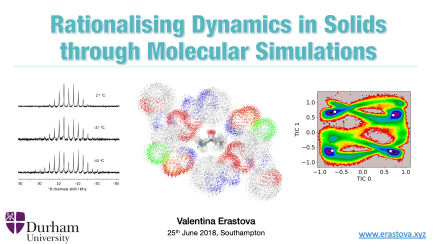
Researchers of the Origins of Life
This week I had a fantastic opportunity to participate in the Interdisciplinary Origin of Life meeting organised by Institute of Molecular Evolution and hosted in the beautiful Schloß Mickeln, Düsseldorf.
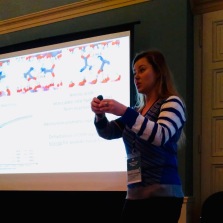
The meeting brought together researches from disciplines as diverse as geochemistry, bioinformatics, astrophysics and philosophy, all sharing the passion for the study of Origin of Life.
Throughout the meeting, we held roundtable discussions to debate our ideas and views, discuss the unknowns in the field, and talk about the future direction of this research.
I was honoured to chair “From Geochemistry to Biochemistry – a Tough Transition” roundtable, full of passionate and engaging discussions on the emergence of very first molecules and the formation of very first polymeric systems starting life as we know it today.
I am confident that this Interdisciplinary Origin of Life meeting will generate new ideas and lead to many fruitful collaborations in future!

Interdisciplinary Origin of Life Meeting

So excited to be talking and chairing discussions at the upcoming Interdisciplinary Origin of Life Meeting organised by Institute of Molecular Evolution, Heinrich Heine Universität, Düsseldorf.
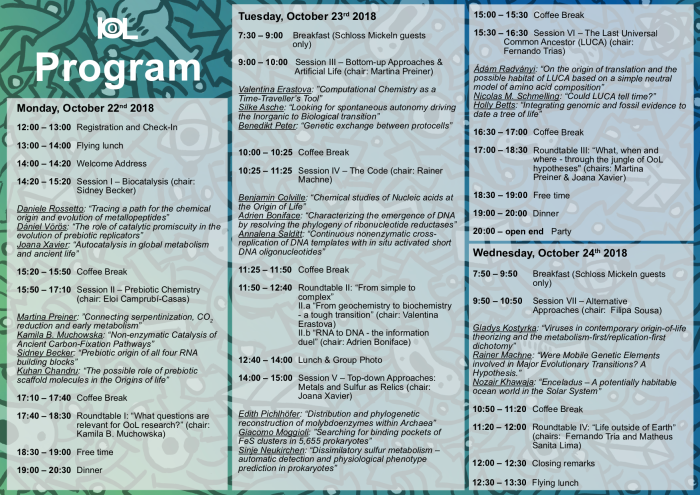
Workshop on Polymers in GeoTechnical and GeoEnvironmental Engineering

Workshop timetable and details via www.ruhr-uni-bochum.de

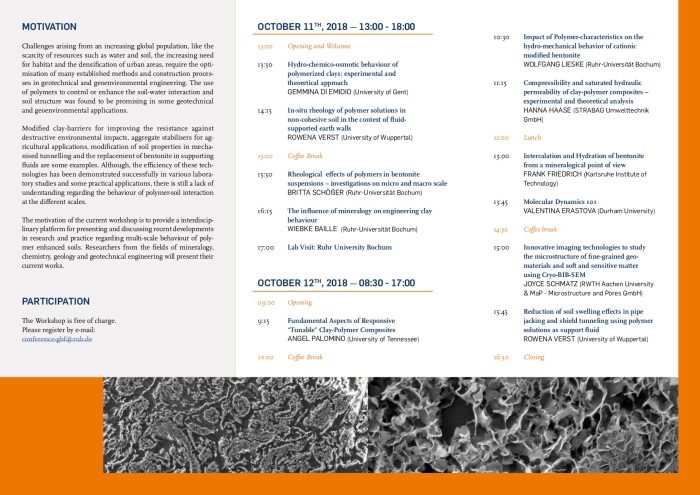
PhD position in solid-state NMR + MD
 A 39-month PhD, under the supervision of Dr Paul Hodgkinson, funded by Leverhulme Trust, is available immediately in Durham University. The project aims to understand disorder in molecular organic solids using solid-state NMR, coupled with cutting-edge computational methods developed in the research group.
A 39-month PhD, under the supervision of Dr Paul Hodgkinson, funded by Leverhulme Trust, is available immediately in Durham University. The project aims to understand disorder in molecular organic solids using solid-state NMR, coupled with cutting-edge computational methods developed in the research group.
For more information see “Making Sense of Disorder in Molecular Organic Solids” www.findaphd.com
Or get in touch with myself or Dr Paul Hodgkinson paul.hodgkinson@durham.ac.uk

